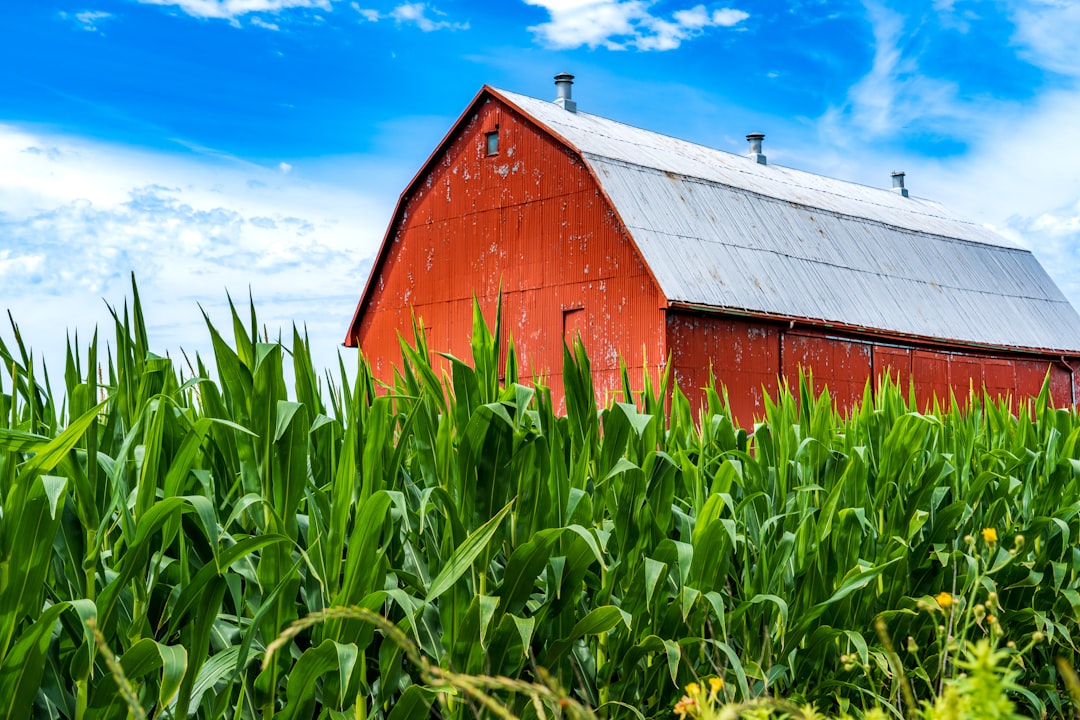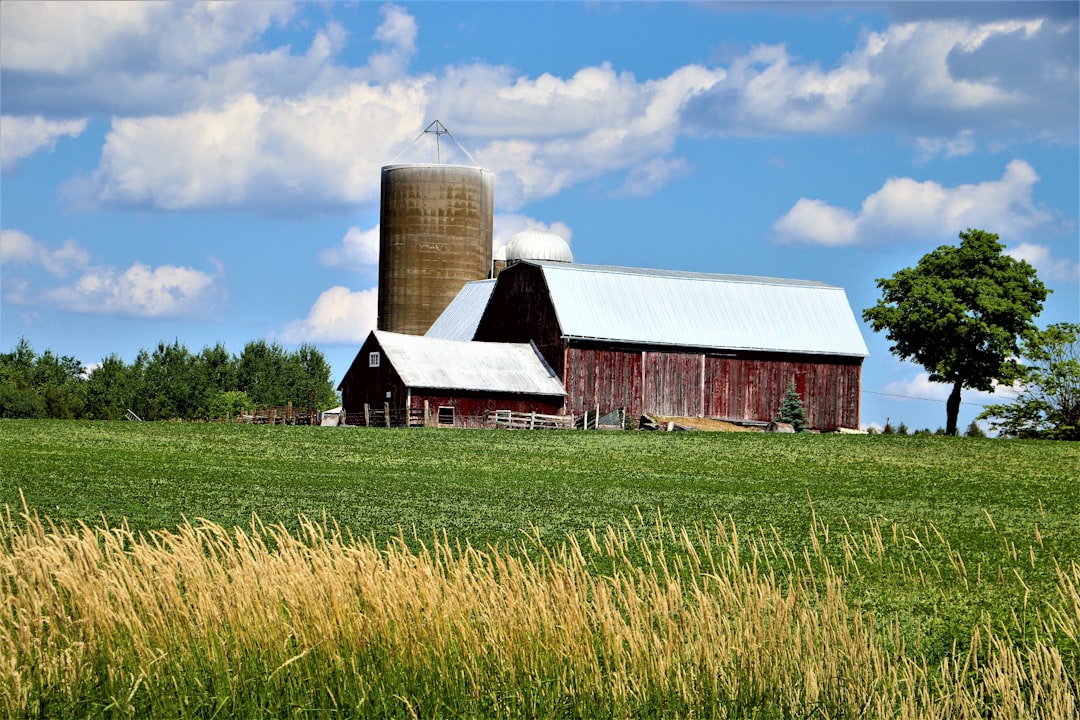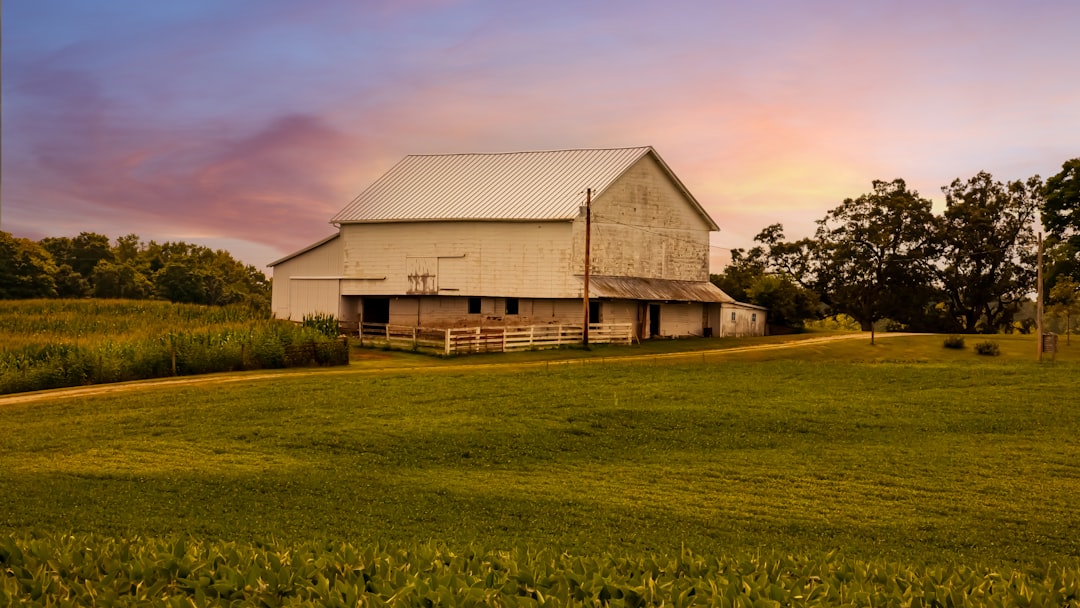

Engage prospects with a scan and streamline customer engagement with FREE QR code marketing tools by Sona – no strings attached!
Create a Free QR CodeFree consultation

No commitment

Engage prospects with a scan and streamline customer engagement with FREE QR code marketing tools by Sona – no strings attached!
Create a Free QR CodeFree consultation

No commitment
Farm insurance providers operate in an environment where the line between offline and online customer journeys is increasingly blurred. Coverage inquiries, claims submissions, and policy renewals have traditionally depended on in-person visits, mailed forms, or phone calls. These approaches risk missing prospects who never reach the CRM or result in untapped engagement opportunities.
QR codes present a practical bridge between physical assets such as brochures, signage, and direct mail and the increasingly agile digital workflows that drive conversion. Deployed strategically, they allow farm insurance providers to reconnect with high-value prospects who otherwise remain anonymous, link farmers with key resources and support, and capture critical engagement data that too often goes unrecorded—all in real time.
Incorporating QR codes throughout each stage of the customer lifecycle enables farm insurance providers to increase qualified leads, reduce paperwork bottlenecks, and resolve the common frustration of incomplete or outdated account data. This positions teams to quickly iterate on marketing strategy, minimize missed touchpoints, and focus on delivering higher-value services across the agriculture insurance spectrum. Let’s explore targeted strategies for leveraging QR codes to improve results in risk management, customer engagement, and policy growth.

Conversion friction remains a pervasive pain point for farm insurance providers, especially when traditional paper forms and static outreach result in missed or untracked leads. QR codes effectively bridge these legacy touchpoints such as event handouts, field day banners, and claims packets with digital, trackable journeys. By meeting farmers in the moments and places they already engage, providers can move them directly to quote forms, appointment scheduling, or claim intake with a single scan.
A successful shift to QR-enabled conversion begins with a clear view of outdated analog processes, followed by intentional design and measurement. Instead of waiting for call-backs or deciphering illegible forms, you can place a code on the exact asset a farmer has in hand and capture an action instantly. Modern platforms, including Sona QR, make this process measurable with campaign-level tracking, scan-to-form attribution, and flexible landing destinations that can be updated without reprinting.
Modern platforms now enable dynamic QR deployment with conversion tracking and segmentation, supporting continuous optimization rather than static, one-off efforts. When backed by integrated analytics and CRM syncing, QR codes turn formerly invisible offline interactions into a reliable, scalable source of qualified pipeline.

Moving prospects from offline awareness to digital conversion presents a persistent hurdle in farm insurance, with valuable leads often lost when interest is not captured at the moment of intent. QR codes elegantly solve this by connecting physical and digital touchpoints so that a farmer can move from a flyer, invoice, or billboard to a quote form or claims portal in seconds. This immediacy reduces the chance that a prospect will delay, forget, or choose a competitor, as seen in agricultural marketing contexts.
QR codes also address the data gap that plagues traditional outreach. Instead of guessing which mailers worked or which event signs sparked conversations, scan events reveal where engagement actually happened. With dynamic destinations and real-time analytics, you can react to seasonal needs, evolving regulations, and localized risks without reprinting or retraining.
Industry materials from renewal packets and in-branch posters to field banners and policy inserts become interactive, data-rich conversion points. Providers gain deeper insight into what truly moves a farmer from curiosity to commitment and can scale what works across regions and seasons.
Fragmented or incomplete lead data often stalls follow-up efforts and campaign success for providers. Selecting the right QR code format gives farm insurance teams flexible, actionable options for connecting with prospective and existing policyholders at every stage. The right format also sets expectations for the user experience so farmers immediately understand what happens after the scan.
Static QR codes suit fixed resources that rarely change, such as a PDF brochure or a general contact page. Dynamic QR codes are ideal when you need to test offers, switch destinations seasonally, or attribute scans by channel. In most growth-focused campaigns, dynamic formats maximize agility and measurement.
Dynamic QR codes provide added control, letting marketing teams redirect scans as campaigns evolve and keep destinations relevant as seasons shift from planting to harvest. When paired with UTM parameters and CRM syncing, these formats reduce missed opportunities and deliver clean attribution back to the print asset or event that created interest.

Lead attrition and untracked engagement often undermine even the most well-designed farm insurance outreach. QR codes shine when placed at natural inflection points in the customer journey, especially where farmers are already handling paperwork, equipment, or signage. The right placement increases scan likelihood, aligns with intent, and makes the next step obvious.
To identify opportunities, map your physical touchpoints by funnel stage. Awareness placements might include billboards or co-op posters, consideration placements might live on brochures and equipment signage, and conversion placements might appear on renewal notices or invoices. By aligning context and CTA, you create momentum that carries farmers forward.
Properly placed, QR codes bridge the silence between touch and engagement. You capture intent from the first glance at a poster or the moment a farmer opens a mailing, then channel it into a tailored digital journey without asking for extra effort.

Bottlenecks in application, claims, and policy support are common frustration points for farm insurance teams. QR codes unlock practical use cases that streamline these experiences and drive measurable outcomes. By mapping use cases to specific assets and CTAs, you can design campaigns that improve both speed and quality of engagement.
Consider aligning each use case with a clear metric such as scan-to-lead rate, claim cycle reduction, or renewal conversion lift. Then instrument the journey so every post-scan action is captured in your analytics pipeline and CRM.
Each use case is built for speed and clarity. When farmers know exactly what happens after a scan and see immediate value, they complete more actions in fewer steps. That momentum compounds into shorter cycles, stronger engagement, and reduced churn.
Traditional approaches often lose track of leads that never convert, resulting in wasted outreach and misaligned marketing spend. QR code scans offer unique visibility into buyer intent at the individual and account level. By intentionally deploying multiple codes across touchpoints, you can segment by behavior rather than assumptions and retarget with offers that match true needs. For tactics, see Sona’s Playbook Intent-Driven Retargeting: Driving High-Impact Campaigns with First-Party Intent Signals.
Start by separating scanners into meaningful segments such as quote seekers, claim initiators, renewal candidates, and risk management learners. Enrich with context like location, time, and asset type, then automate next steps so that follow-up is timely and relevant. With platforms like Sona QR, these segments can be synced to CRM and ad platforms in real time.
This data-driven approach reduces gaps in policyholder journeys, elevates conversion efficiency, and enables insurers to prioritize resources where intent is strongest. Over time, your retargeting grows more precise as scan data accumulates across seasons and campaigns.
Missed segmentation and inconsistent outreach are persistent struggles for many insurance marketers. QR codes bring your physical and digital initiatives together, creating a unified customer experience that is easy to track. When every print asset, booth, or video includes a way to scan and act, you turn passive attention into an interactive entry point.
Integration works best when each channel’s role is clear. Print can seed awareness with a simple promise, events can deepen education with resource hubs, and mailers can drive time-sensitive renewals or updates. A shared analytics layer then reveals which combinations create the strongest lift and where budget should shift. Use direct mail to make offline campaigns fully trackable and measurable.
With all scan data tracked in an integrated platform, farm insurance teams gain a consolidated view of where engagement is working. You can spot regional patterns, understand seasonal spikes, and adjust media mix decisions to maximize ROI across campaigns.
Persistent process issues such as slow deployment, inconsistent creative, or poor attribution can undermine QR code strategy if not proactively managed. A lightweight checklist keeps teams aligned, reduces friction between marketing and field agents, and ensures every code is measurable from day one. For fundamentals, see Sona QR’s guide to QR codes in marketing.
Use the following steps to guide planning, design, deployment, and optimization. Keep business outcomes front and center so that creative choices, placements, and targeting decisions ladder up to goals like increased quote requests, faster claims, and higher renewals.
A disciplined checklist turns QR from a novelty into a repeatable growth engine. As teams get comfortable with the process, you can scale across regions, products, and partners without sacrificing quality or measurement.
The inability to connect offline interactions with digital conversions and policy outcomes is a root cause of wasted marketing spend in farm insurance. QR analytics resolve this blind spot by capturing every scan and tying it to downstream actions such as quote requests, scheduled consultations, and policy binds. With the right instrumentation, you can move past top-line scan counts and see true revenue contribution.
A robust analytics strategy begins with consistent tagging and continues through CRM integration and multi-touch attribution. Platforms like Sona QR and Sona, an AI-powered marketing platform that turns first-party data into revenue through automated attribution, data activation, and workflow orchestration, support this workflow by unifying scan data with web analytics, ad engagement, and CRM outcomes, then revealing which combinations of assets and channels produce the strongest results. See Sona’s blog post The Essential Guide to Offline Attribution: Maximizing ROI Through Offline Channels.
By integrating these insights automatically, providers reduce the pain of manual reporting and gain a closed feedback loop for continuous optimization. Over time, scan intelligence becomes a strategic asset that informs product positioning, pricing conversations, and service staffing by region.
Conversion gaps and engagement drop-off can persist even after initial deployment. The key is to treat QR codes as part of a living system: codes, creative, destinations, and follow-up flows that evolve with performance data and customer feedback. Practical best practices ensure your execution stays sharp as campaigns scale. For identifying high-intent accounts, read Sona’s blog post The Essential Guide to Account Identification: Turn Your Website Into a Goldmine.
Training and education are just as important as technology. When agents understand how to talk about QR value, and customers see immediate benefits like faster claims or simpler renewals, scanning becomes second nature rather than an extra step.
These practices close process gaps, improve data capture, and enable providers to respond in real time to policyholder and prospect needs. As the organization builds muscle memory around QR deployment, the incremental gains add up to meaningful growth.

Providers frequently cite frustration from anonymous or half-completed customer journeys. Forward-thinking insurers are now leveraging QR codes to bridge these gaps with simple, creative campaigns that deliver measurable results. While tactics vary by region and product mix, the common theme is fast action and clear value. For lead-gen ideas, see Farm Journal’s marketing solutions kit.
Consider how these examples translate to your own assets and partnerships. The most effective campaigns often start with a single high-intent placement and expand to supporting materials once the model proves itself.
These examples demonstrate how QR can turn high-traffic, low-visibility moments into trackable, efficient funnels. By testing, measuring, and iterating, you can adapt these ideas to local contexts and scale what performs best.
Even as more farm insurance teams deploy QR codes, execution missteps can erode results. The most common issues involve unclear CTAs, poor environmental optimization, inconsistent follow-up, and incomplete analytics. Industry experts emphasize that clarity, testing, and end-to-end instrumentation are non-negotiable for success.
Treat your codes like any other media investment. Creative and placement lift the top of the funnel, but post-scan experience and attribution drive outcomes. A well-designed code is only as good as the landing experience it points to and the follow-up it triggers. For creative integration ideas, see Sona QR’s guide to integrate QR codes.
Industry data and field experience reinforce that well-executed QR campaigns outperform manual or static conversions. Completion rates rise when the experience is simple and benefits are obvious, while acquisition costs fall as retargeting and segmentation improve. Avoid treating QR as a one-off add-on; integrate it as a targeted, measured component of your marketing and service model for durable, high-ROI growth.
QR codes have become essential for farm insurance providers seeking to overcome chronic challenges such as lost leads, hidden engagement, and incomplete data that slow growth and impede policyholder satisfaction. When woven thoughtfully into each phase of the customer journey, QR codes turn physical touchpoints into measurable, actionable data streams that drive meaningful business outcomes.
By selectively implementing QR strategies across key events, mailings, and day-to-day interactions, insurance teams open the door to more precise personalization, faster claims, and greater responsiveness. The outcome is not just improved conversion metrics, but a fundamentally better customer experience that can adapt quickly to the evolving complexities of agriculture and risk management. Start creating QR codes for free.
QR codes have transformed farm insurance providers from traditional outreach methods into powerful, data-driven conversion engines. Whether it’s acquiring new policyholders, simplifying claims processing, or enhancing customer education, QR codes enable instant, mobile-friendly interactions that capture real-time engagement and turn every touchpoint into a conversion opportunity. Imagine effortlessly tracking which brochures, farm visits, or ads lead to signed policies—and adjusting your strategy instantly without reprinting materials.
With Sona QR, you can create dynamic, trackable QR codes tailored for the unique needs of farm insurance, updating campaigns on the fly and linking every scan directly to revenue growth. No more guesswork, just smarter, more effective marketing that connects offline interactions with measurable results. Start for free with Sona QR today and harness the full potential of QR codes to grow your farm insurance business.
Farm insurance includes coverage for crops, livestock, equipment breakdown, farm liability, and bundled packages tailored to different farm types and specialties.
Choose a provider that offers clear outcomes, uses efficient digital tools like QR codes to reduce paperwork, provides real-time support, and delivers personalized services across the agriculture insurance spectrum.
Farm insurance helps manage agricultural risks by providing coverage for crop and livestock losses, equipment damage, liability protection, and enables faster claims and renewals through streamlined processes.
Farmers can apply by scanning QR codes on brochures, event materials, or policy documents that link directly to digital quote forms or applications, enabling quicker and paperless submissions.
Farm insurance mitigates financial losses from weather events, equipment damage, or liability claims by providing tailored coverage options and enabling faster claims processing through digital tools.
QR codes bridge offline and online interactions by allowing farmers to quickly access quotes, file claims, or book appointments, which increases qualified leads and captures real-time engagement data.
Useful QR code formats include static codes for fixed content, dynamic codes for flexible destinations, web links to coverage pages, vCards for contact sharing, forms for applications or claims, SMS or email links, and app downloads.
Effective placements include trade shows, agricultural events, equipment signage, direct mail and policy documents, field and roadside billboards, and local partner locations like feed stores or seed dealers.
Providers use analytics to monitor scan location, timing, and subsequent actions like quote requests or claims, syncing data with CRM systems to measure conversion rates and optimize campaigns.
Avoid unclear calls to action, poor environmental testing, inconsistent follow-up, and incomplete analytics by ensuring clear messaging, field validation, seamless user experience, and end-to-end measurement.
Providers segment scanners by behavior such as quote seekers or claim initiators, enrich data with context like location and asset type, and sync segments to CRM and ad platforms for personalized follow-up.
Steps include choosing a clear use case, selecting appropriate QR code types, designing and testing codes in real conditions, deploying across high-impact touchpoints, and tracking, measuring, and optimizing performance.
QR codes provide a frictionless and immediate path to digital forms and portals, intercept anonymous prospects, and reduce drop-off associated with paper or phone-only workflows.
Providers can add QR codes to printed brochures, social media event signage, direct mail, TV or digital videos, and in-person outreach materials to unify physical and digital engagement.
Use Sona QR's trackable codes to improve customer acquisition and engagement today.
Create Your FREE Trackable QR Code in SecondsJoin results-focused teams combining Sona Platform automation with advanced Google Ads strategies to scale lead generation

Connect your existing CRM

Free Account Enrichment

No setup fees
No commitment required

Free consultation

Get a custom Google Ads roadmap for your business






Launch campaigns that generate qualified leads in 30 days or less.
